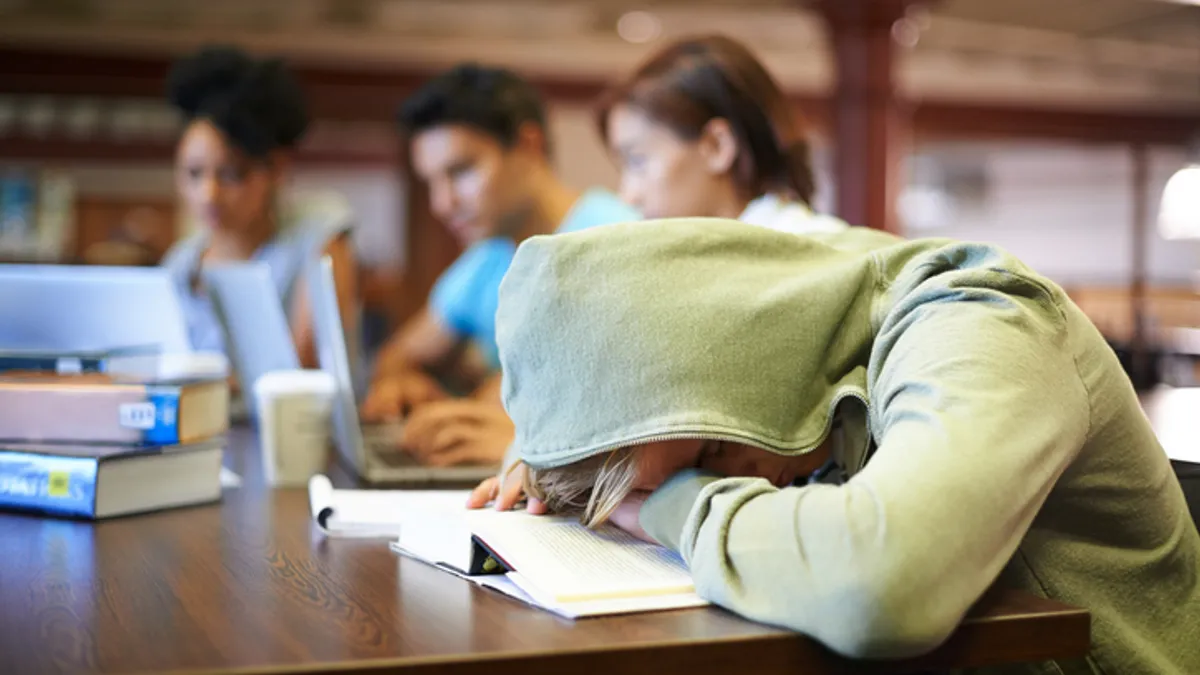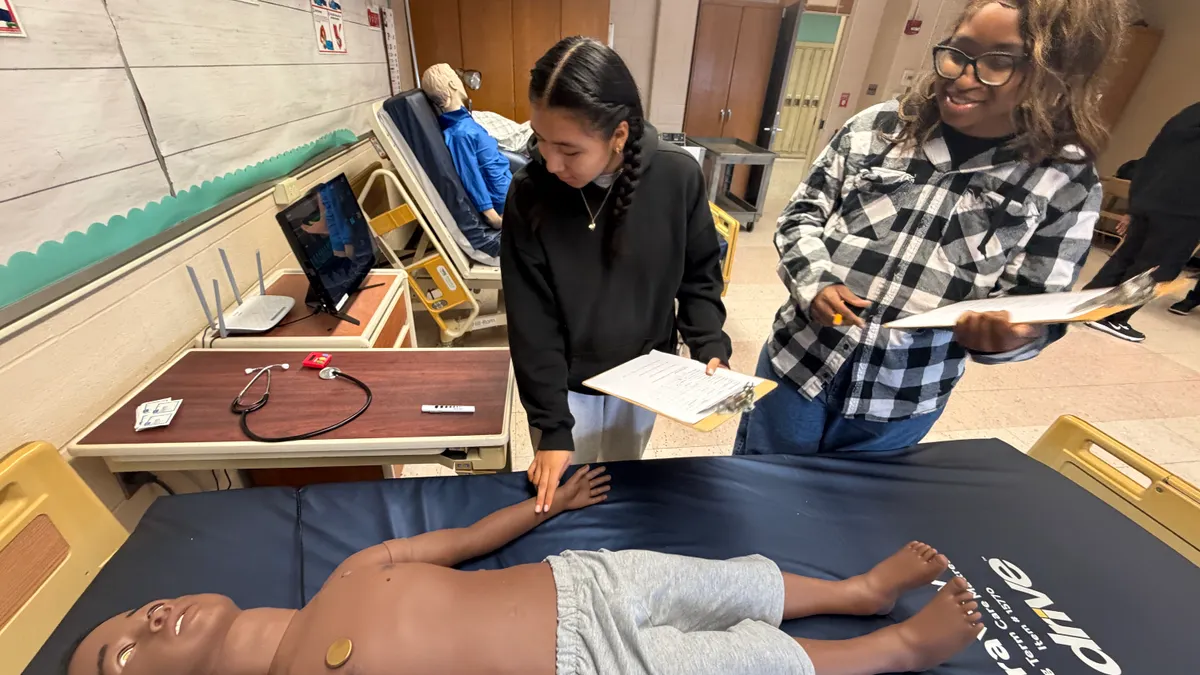Walk into most schools, and posters about healthy food habits and exercise routines likely line hallways, cafeterias and gyms. Details about healthy sleep habits? That information can be harder to find.
However, most middle and high school students do not get enough sleep, which according to the Centers for Disease Control and Prevention, is approximately 8 to 10 hours a night for teens ages 13 to 18. Further, some experts believe that instilling good sleep habits is just as important as promoting healthy exercise and eating habits in students.
“You don’t have to convince people they should eat healthy food,” says Dr. Whitney Roban, author and founder of Solve Our Sleep, a sleep training program for children, teens and adults. “You shouldn’t have to convince people that sleep is the most important behavior.”
With daylight saving time ending in most states on Sunday, Nov. 3, educators have an opportunity to link sleep habits into the curriculum from a variety of subjects and across K-12 classes.
Teaching good habits
It's hard for everyone — not just students — to develop good sleep habits because there are many things that keep people from winding down and falling asleep, said Brinley Kantorski, director of education and multimedia development at The Partnership in Education at Duquesne University in Pittsburgh.
One of the biggest culprits are smartphones, which can trigger a person's dopamine-reward system when they scroll, like and click.
“We have so many distractions that are easy to use, including using our phone in bed and not blocking out the blue light,” Kantorski says.
Parents and their own poor habits may also play a role, adds Roban. That can include delaying dinnertime or attributing their child’s poor sleep to something inherited.
However, Roban says it’s never too late — nor too early — to create good sleep hygiene in the home. “It’s critical in early ages to have parents involved.”
Kantorski encourages students to use a sleep and mood tracker, which can be done with paper and pencil. Youth can also download free mood-tracking apps that ask questions to help students see the real-world connections between sleep and their physical and mental status.
“They may ask, ‘When I get a bad night of sleep, how does it affect me?'” she says.
Involving families
Gabrielle Rigney is sensitive to teachers who may feel overwhelmed about adding more lessons into an already busy learning day, no matter the grade or subject they teach.
However, sleep trackers are useful tools to fold into math classes with younger students doing simple arithmetic exercises, including learning how to graph, says the lecturer in undergraduate psychology at Central Queensland University’s Appleton Institute School of Health, Medical and Applied Sciences in Australia. Rigney also co-authored a 2023 study on sleep intervention techniques for teens.
Educators can involve families by assigning young students to ask parents, siblings or grandparents about their sleep. Classes can even run a simple analysis to see if sleep patterns differ based on people's ages.
Students in upper grades can begin to study the biology of sleep and how light and activities can affect hormones and sleep patterns. That’s one reason Rigney and other researchers she works with encourage people not to have devices in the room with them when they sleep.
“What are we doing on our devices, such as watching a scary movie or playing video games that tap into our engagement and arousal,” she says. “There are things we shouldn’t be doing.”
Spotting and mitigating concerns
With a renewed focus on teaching better sleep habits, educators may begin to pay more attention to student behaviors, such as falling asleep during class.
Jennifer Martin, a professor-in-residence at the David Geffen School of Medicine at the University of California, Los Angeles, encourages educators to check on students if they see this behavior, and ask if something is going on in their lives beyond staying up late to study. More critically, she cautions teachers to not punish students for that behavior.
“They shouldn’t consider it students doing something wrong,” says Martin, who also serves as president of the board of directors for the American Academy of Sleep Medicine.
Instead, Martin notes that drowsiness in students may be due to teenagers' biological clocks and that for 80% to 90% of them, their internal system is telling them to stay up later and sleep in longer.
“When they’re in elementary school, they fall asleep in the early evening and get up at 7:30 a.m., but that's not possible for a lot of teenagers,” Martin says. “They’re biologically wired to be up later, and when school starts early, and have extracurricular activities in the morning, kids don’t have enough time to sleep.”
Kantorski adds that this shift towards night owl behavior starts young. She says while 73% of high school students don’t get enough sleep, 58% of middle school students are already not getting enough sleep even before they transition into upper grades. Further, she says educators should talk to students about what constitutes a restful night of sleep versus one that’s more irregular.
“There’s good sleep and bad sleep, and it’s good for people to know it’s a pretty big problem,” she says.
Critically, however, Kantorski cautions educators against chastising students for poor sleep, which could then lead students to criticize themselves. It’s not optimal for someone already struggling after a poor night of sleep to add more stress to an already difficult day they may be facing.
Instead, she suggests adding some tools into a sleep curriculum that can help students learn how to calm themselves when they’re stressed from a lack of shut-eye or any other issues. Such strategies can include grounding exercises or mindfulness activities to help students — and teachers — transition through a bad day, manage a poor night’s sleep, and take away any negative feelings they may be directing toward themselves.
“Sometimes it’s unavoidable, and sometimes kids don’t have control over the home settings and how much noise and light is happening,” Kantorski says. “Instead, focus on what they can do to mitigate a bad night’s sleep.”






 Dive Awards
Dive Awards













